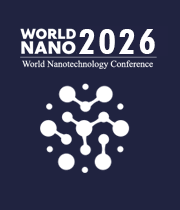Nanobiotechnology and Nanosafety
The term “Nanobiotechnology” refers to the intersection of biology and nanotechnology. This discipline aids in bridging the gap between scientific study and a variety of nanotechnology fields. Nanobiology improves ideas by including nanoscale, nanodevices, and nanoparticle phenomena that occur within the nanotech study.
The term “nanosafety” refers to all of the issues surrounding nanotechnology's protection. Despite the fact that nanotechnology has been blooming for almost two decades, it is still considered a novel technology, and the health consequences of nanomaterials have not been thoroughly researched. Nanosized materials have different physicochemical attributes than the source material (thereby changing their reactivity in biological systems). It raises the question of whether conventional methods for assessing the detrimental effects of NMs are still valid.
a. Nanobiotechnology:
- Impact of Nanobiotechnology
- Regulations of Nanobiotechnology
- Roller Nanoimprint
- Bionanoscience
- Ultrafast Nanoimprint
- Nanobiomolecular Engineering
b. Nanosafety:
- Genetic sequence using DNA-tagged gold nanoparticles
- Nanotechnology Regulations
- Carbon Nanotube Filters
- Strategic and Nuclear Disarmaments
- Disaster Management

Harry Ruda
University of Toronto, Canada
Raman Singh
Monash University, Australia
Paulo Cesar De Morais
Catholic University of Brasilia, Brazil
Xiao Hong Nancy Xu
Old Dominion University, United States
S V A R Sastry
Harcourt Butler Technical University, India
Vinayak Adimule
Angadi Institute of Technology and Management, India



Title : 40,000 implants in humans and no failure: The impact of nanomedicine
Thomas J Webster, Hebei University of Technology, China
Title : Cellulose-derived biochar modified with iron oxide and ZnO nanoparticles by a novel one-step pyrolytic method for removal of emerging contaminants from water
Rashad Al Gaashani, Hamad Bin Khalifa University, Qatar
Title : Harnessing the unique properties of engineered nanostructures for sensing
Harry Ruda, University of Toronto, Canada
Title : Circumventing challenges in developing CVD graphene on steels for extraordinary and durable corrosion resistance
Raman Singh, Monash University, Australia
Title : Nano DAP augments productivity, phosphorus use efficiency, and profitability of spring wheat in India
Binaya Kumar Parida, Coromandel International Ltd, India
Title : Lipid nanoparticles formulations: From bench scale to industrial scale
Mohammad A Obeid, RAK Medical and Health Sciences University, United Arab Emirates